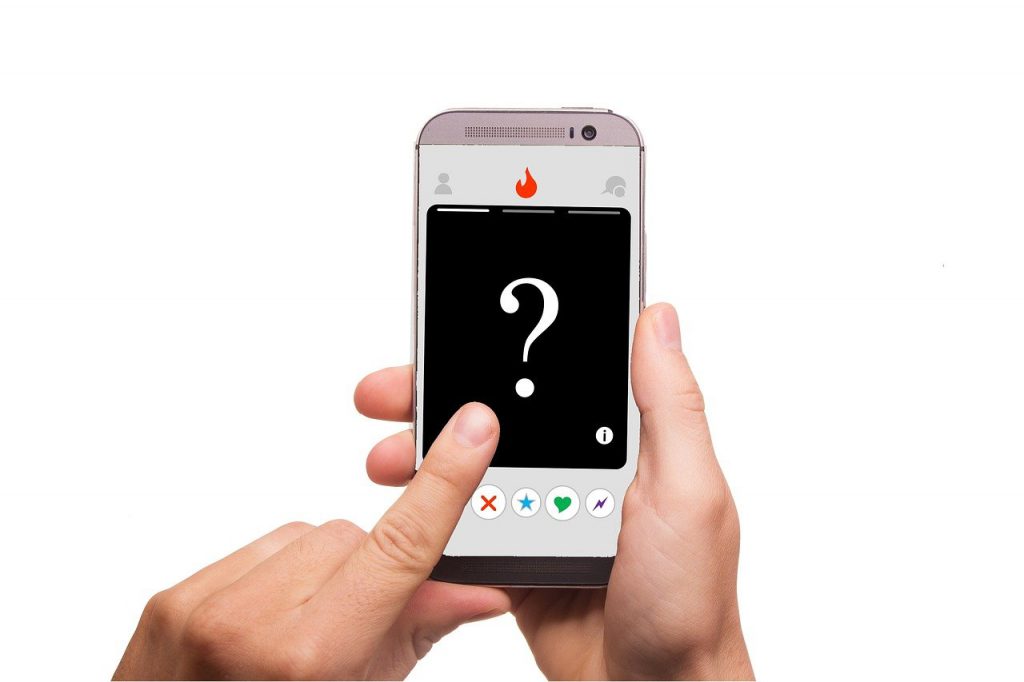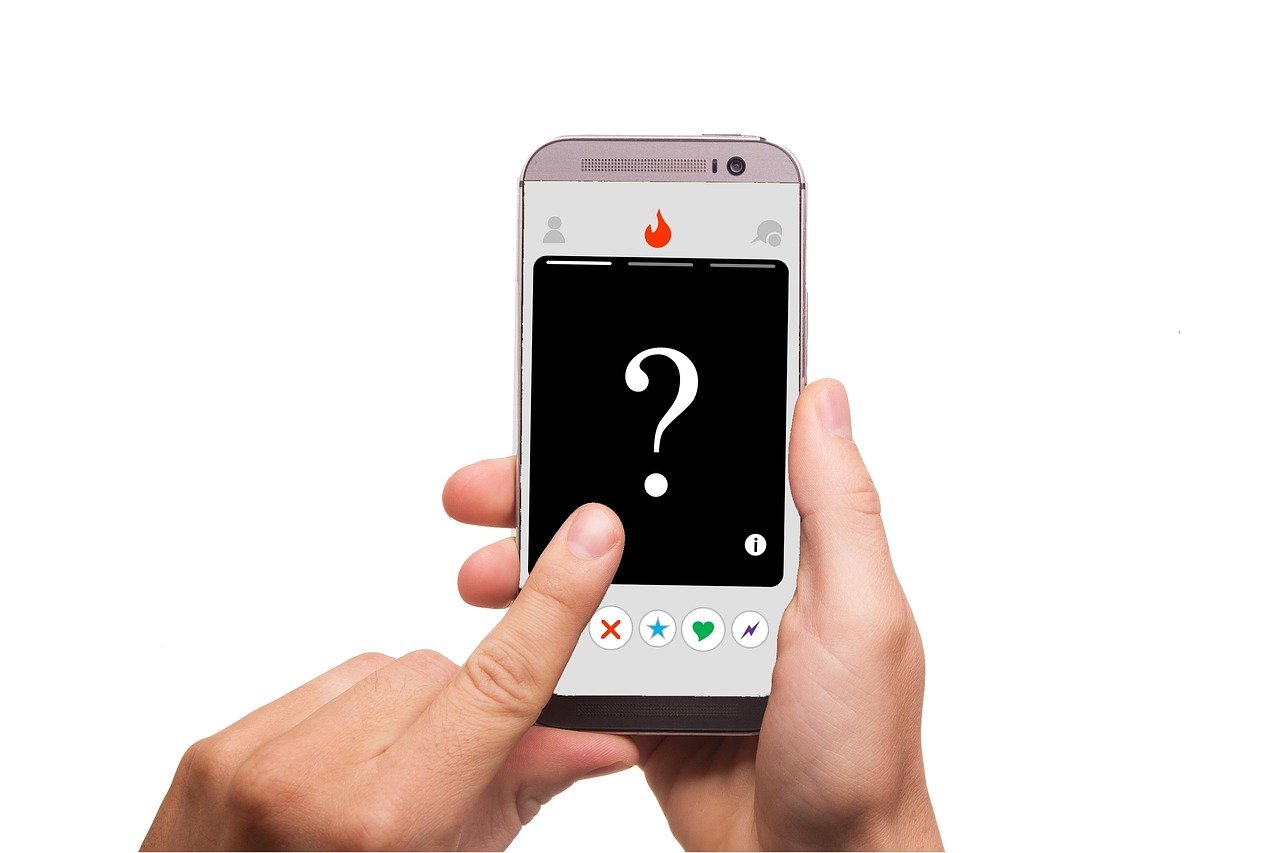ICT and development intersect in many ways and do so increasingly as both technology and development work evolve. This series of articles sheds a light on one aspect of “Development in the digital world”1, or development in a digitalized context: (mis)representations of development and the role of social media platforms and platform mechanisms in them. Are social media logics pushing to harmful practices? Are social media users benefiting from poverty porn? Can social media be used to counter these practices? The series of article reflects on these questions through four different case studies.
Once aimlessly scrolling through Instagram I stumbled on an account called Humanitarians of Tinder. The beautiful but simple logo of the page could point towards anything between a high-end fashion brand and a newspaper, a creative trick to attract curious Instagrammers such as myself on the page. Once I clicked on the profile, the content unveiled instead a quite unaesthetic collection of screenshots of Tinder profiles. At first, it all seemed quite random, but when looking at the pictures for just a while longer, the pattern was not too hard to find: all pictures present a white person from the Global North, accompanied by one or more other people seemingly from the Global South, many of them children. Associated with witty captions with a fair dose of irony, the aim of the publications becomes quickly clear: to denounce misrepresentations of development on Tinder profiles. But what leads to this practice? From all the selfies on a person’s camera roll, why do people opt for these tasteless, racist, and in every way highly problematic images?
After a bit of research, it turns out I am not the first one whose interest Humanitarians of Tinder got, and there have been several articles about the account previously. According to their website, Humanitarians of Tinder have been featured in a number of renowned newspapers that have brought up different problematic aspects of the practice. In 2016, professor Lisa Richey2 used Humanitarians of Tinder as a case-study to explore the representations of North-South relations in media. Yet, one important component that seems to have been left out of the conversation so far is the role of Tinder as a platform in encouraging users to post such images.
Launched in 2012, Tinder’s mission is to make “being single more fun and rewarding by connecting people who may not have otherwise met in real life”. The mission statement itself therefore points towards the gamification of romantic encounters through the application. The layout and affordances of the platform reflect the game-like characteristics as well: a user is shown profiles of others nearby including images and a biography, then encouraged to swipe left or right depending on whether they are interested in the person or not, similarly to shuffling a deck of cards. The user is “rewarded” with a match if both users swipe right on each other’s profiles, and a chat page between the users becomes available. Additionally, Tinder has extra features that require a paid membership through which a user can increase their chances of being seen by others and getting matches. Bauman3 suggested already in 2003 that romance is turned into entertainment in computer-dating, and Tinder is a prime example of this.
As potential partners are selected based on a limited amount of information available on the profile, self-representation has a central role for a Tinder user to attract matches, not limited only to the absolute number of matches but also their quality, or the potential compatibility between users. Miller and colleagues4 point out that while self-representation on social media is often seen as a narcissistic practice, it is at the same time also directed outwards, towards a specific audience. This is an important consideration on Tinder: while profiles are made with the egocentric goal of getting potential romantic encounters, they are also curated with the audience’s reactions in mind. In the same research, Miller and colleagues bring up the importance of visuals on social media, which also play a central role on Tinder as images are the first elements of a profile displayed to users.

One way to approach self-representation in the context of social media is through the emotional reaction it raises in other users. Emotions are an important part of the mechanisms at the base of social media, and specifically visual content generates strong emotional reactions5. The fast pace and content overload of social media platforms foster immediate reactions based on emotions as users resort to what Reisberg6 calls “type 1” thinking – and instantly generated, impulsive and emotion-guided reaction, instead of the more time-consuming and rational “type 2” thinking. Emotion-guided, quick thinking is for many the basis of playing the Tinder game, as a critical and thorough assessment of each profile wouldn’t be resource-efficient.
A the same time, emotions are also strongly tied to representations of development. Scott7 identified three types of strategic representations of communication for development to reach goals: “shock effect” appeals, deliberate positivism, and post-humanitarian communication. Of these three, both shock effect appeals and deliberate positivism appeal to strong emotional reactions in the audience, the former using negative emotions stemming from images of suffering, while the latter opts for positive emotions related to the impact of help provided. Humanitarians of Tinder, depending on the framing of images and ways of presenting the participants, are in this sense comparable to communication practitioners using shock effect appeals or deliberate positivist representations. The goal of an image in a profile is to present the user in a positive light as a “good-doer” through representations of development by appealing to the audience’s quick, emotional reactions at the sight of such an image on a profile.
When scrolling through screenshots of profiles one more cringe-worthy than the other, I couldn’t help but wonder: since these images are so problematic, why is this practice so common? The strategy must simply work for a big enough number of users, in the same way as images with dogs or bikinis. This could be an example of how, while having been strongly criticized in the field of ComDev in recent years, these practices are still strongly present in the world we live in. Especially in the mind of the general audience, perceptions of development are so deeply rooted that in only a few seconds preceding a swipe, Tinder users can classify a profile as worthy of a match based on such images. While there doesn’t seem to be any publically available data from Tinder on whether representing oneself as a “humanitarian” indeed increase a person’s chances of getting a match and dating apps are perhaps not the most common place to test hypotheses on perceptions of development, I dare to make one claim: dating apps can reveal a lot about the society we live in, and as long as Humanitarians of Tinder will have content to post on their account, acceptance of North-South inequalities and the white savior complex remain, at least to a certain extent, in the general population. At the same time, the aspects of gamification of social media, dating apps or others, may reinforce these perceptions by pushing users to appeal to strong emotions to get attention, a risk to be taken into consideration in communication for development.
Notes:
1 Roberts, T. (2019). Digital Development: what’s in a name? Appropriating Technology, August 9.
2 Richey, L. (2016). “Tinder Humanitarians”: The Moral Panic Around Representations of Old Relationships in New Media. Javnost – The Public, 23(4), 398-414.
3 Bauman, Z. (2003). Liquid Love: On the Frailty of Human Bonds. Cambridge: Polity.
4 Miller, D., Costa, E. & Haynes, N. et al. (2016). How the world changed social. London: UCL Press.
5 Joffe, H. (2008). The Power of Visual Material: Persuasion, Emotion and Identification. Diogenes, 55(1), 84–93.
6 Reisberg, D. (2016). Cognition : Exploring the science of the mind (6th). New York: W.W. Norton & Company.
7 Scott, M. (2014) Media and Development. London: Zed Books.


